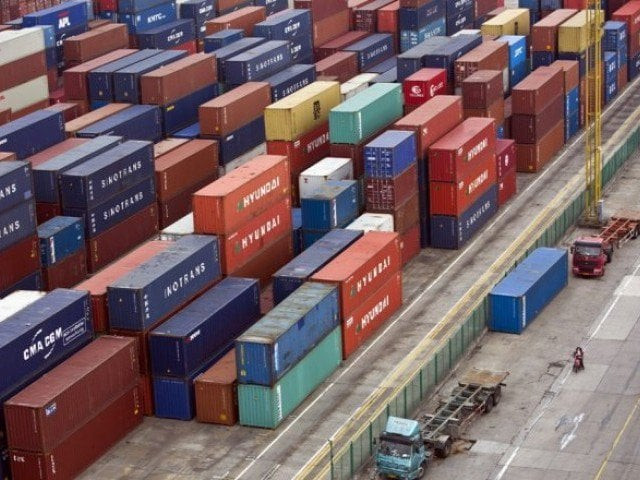ADB report: Pakistan may face concerns over external account stability
Economy to grow moderately at 4.5%; falling remittances, exports will pose problems

PHOTO: REUTERS
Pakistan’s economy would grow at a moderate pace of 4.5% this fiscal year and the country may face external account stability concerns in the longer run due to slowdown in remittances and falling exports, according to a new report of the Asian Development Bank (ADB).
The Asian Development Outlook 2016 - the biannual flagship report that the Manila-based lending agency released on Wednesday - has flagged the issue of remittances, which are slowing down due to falling incomes of Gulf countries.
However, the chapter on Pakistan lacks substance on savings, investments and a critical analysis of fiscal operations.
The ADB has projected Pakistan’s economy will grow at a moderate pace of 4.5%, which is below the official target by one percentage point and significantly lower than the rate required for absorbing the youth seeking jobs.
At this pace, Pakistan’s economy will be the fifth fastest growing economy among eight South Asian nations. Maldives, Afghanistan and Nepal are the other three countries that will fall behind Pakistan. India is projected to grow at the fastest pace of 7.4% in the region.
“Despite global headwinds, the economic outlook of Pakistan is for continued moderate growth as structural and macroeconomic reforms deepen,” noted the ADB. Persistence will be required to overcome longstanding structural impediments to investment and enable faster growth, it added.
The report said that since remittances significantly contributed receipts and were a buffer against external shocks, any sustained slowdown on top of falling exports would create concern for the stability of external accounts.
The government has estimated receiving $19.5 billion remittances in the current fiscal year. The ADB noted that workers’ remittances expanded by only 6% in July-January period of this fiscal year, down from an average of 15% annually in the previous six years.
The ADB said that net imports will continue to be a drag on growth as exports falter and lower oil imports are offset by higher quantities of other imports. “A slowdown in remittances and lower commodity prices are expected to retard growth in rural incomes and spending,” said the ADB.
Despite concerns raised by some local economists and now by the ADB, the federal government and the State Bank of Pakistan (SBP) have not prepared alternative plans.
The ADB said that challenges that impede growth in Pakistan include weak infrastructure and transport connectivity, inadequate workforce skills and subpar governance, institutions, service delivery and access to finance.
It said inadequate investment has weakened human development, and the resulting dearth of skills hampers the country’s ability to compete in global markets and transition to production with higher value added.
It has said that further implementation of structural reforms will consolidate recent gains in macroeconomic stability and improve the investment climate amidst the improving security situation, especially in Karachi, the commercial hub of the country.
The lending agency noted that growth in industry is expected to be driven by strong expansion in construction and continued moderate expansion in mining, utilities, and manufacturing. The agriculture sector is likely to continue to grow only moderately. However, continued strong expansion in livestock, which accounts for over half of agricultural production, will partly offset reductions elsewhere.
The government introduced an agriculture support package in September, which largely remains unimplemented.
Growth in services will be led largely by transport improvements and higher profits for financial services, though retail and wholesale trade should also benefit from improved industrial activity. In the current fiscal year, inflation is expected to average 3.2%, reflecting lower global oil and commodity prices.
The ADB said additional revenue measures taken in December 2015 are expected to push inflation up marginally in the remaining months of the fiscal year.
The current account deficit in FY2016 is projected to remain low at 1% of GDP for a second year in a row as prices for oil and other commodities stay low and inflows continue under the Coalition Support Fund (CSF) - despite declining exports and slowing growth in remittances.
The ADB said that official foreign exchange reserves increased to $15.4 billion in January 2016, however, inflows that do not create debt continued to be limited, as foreign direct investment increased only slightly to $624 million.
Published in The Express Tribune, March 31st, 2016.
Like Business on Facebook, follow @TribuneBiz on Twitter to stay informed and join in the conversation.



















COMMENTS
Comments are moderated and generally will be posted if they are on-topic and not abusive.
For more information, please see our Comments FAQ